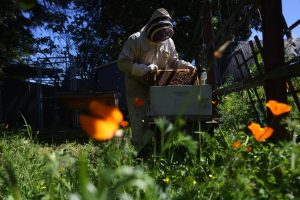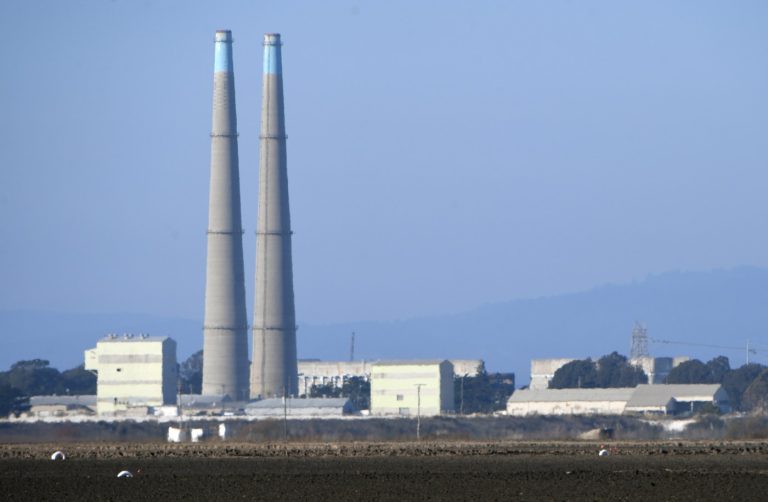Outside Morgan Hill in southern Santa Clara County, an orchard could be razed for 320 single-family homes. On a pasture on the northern edge of Benicia, cows could give way to 1,080 houses. On a quiet, tree-lined, two-lane road cutting through Sonoma County wine country, there could soon be traffic from 514 homes.
In a development pattern reminiscent of the 1960s, homebuilders are proposing these houses — and thousands more — on farmland and grassy hills on the outskirts of the Bay Area.
And because of state housing law, local governments and concerned environmental groups may be powerless to stop them.
Density and infill have been the ideals for development among California housing advocates in recent years as the state finally starts to make progress building more housing amid a dire shortage. But recently, one of the tools in state housing law that’s generated the most excitement among YIMBYs for its power to build new high-density housing in areas that previously rejected it, could also end up leading to just the opposite: urban sprawl.
“Certainly, this is not what housing advocates were thinking would happen,” said Jordan Grimes, who works on sustainable housing policy at the Greenbelt Alliance, a climate-focused nonprofit.
Developers proposing these massive new subdivisions on the edge of the Bay Area are playing a card previously unavailable to them — the “builder’s remedy,” a penalty imposed on cities and counties that aren’t doing their part to build new housing. It allows developers to skirt local zoning, so long as 20% of the units qualify as affordable.
California law requires cities and counties to come up with plans every eight years for how they will accommodate residential growth projected for their area. By 2031, the Bay Area is meant to build 440,000 new units to make up for a years-long shortage, which has led to some of the nation’s highest rents and home prices and thousands of people living on the streets.
Bay Area cities and counties were supposed to submit their latest plans to the state in January 2023, but many blew the deadline. Now, they’ll face the consequence: developers can propose almost any project they want, including major subdivisions on unincorporated county land that doesn’t always have the infrastructure to support new growth.
“This is not the type of housing the builder’s remedy was meant for, nor that we should be encouraging,” Grimes said. “Had counties and cities submitted compliant plans, we would not be in this boat that we’re in now.”
Homes in the hills
Driving along Pierce Road in the hills above Saratoga, there’s a moment where the homes give way to forest. The road narrows. Keep climbing and you’ll eventually get to the Mountain Winery, a popular concert venue with a 2,500-seat amphitheater and expansive views of the South Bay.
Earlier this year, the property owners submitted a builder’s remedy application with plans to expand the site, adding hundreds of homes and a hotel.
There are plenty of reasons opponents dislike the project, and Alice Kaufman, policy director of the open space preservation nonprofit Green Foothills, can name a few. The hillside is at major risk of wildfire — in the event of an evacuation, the road could be too small to handle the traffic. Would insurance companies, which are fleeing California, cover the homes here, she wonders? What’s more, the project could set a precedent for future development in these foothills.
“We know the state has a goal of wanting to have more housing, but they also have a goal of protecting more open space,” Kaufman said.
Alice Kaufman, policy director for environmental nonprofit Green Foothills, is concerned about “builder remedy” projects threatening Bay Area farmland and hillsides, like the one proposed at Mountain Winery in unincorporated Santa Clara County near Saratoga, Calif., Friday, April 19, 2024. (Karl Mondon/Bay Area News Group)
On a recent sunny day from the top of Mountain Winery, Kaufman looked out over the sprawling development below that has defined much of the Bay Area’s growth.
“We realized the mistakes we made in decades past,” she said. “It’s costly to build this way.”
In 2020, Saratoga decided against annexing the property into city limits. The move would have opened a path for Mountain Winery owner Bill Hirschman to build the sort of higher-density project that counties tend to reject and instead encourage in cities, so that new housing goes in near existing roads, schools and jobs.
But Bay Area cities have largely resisted building new homes.
“The default scenario in California for decades has been to build housing on agricultural land or out in the periphery, because cities won’t allow you to build it within their boundaries,” said Matthew Lewis, communications director of California YIMBY, a pro-housing group.
Now, rather than being able to plan for where new houses go, the builder’s remedy is forcing new haphazard development, he said.
“It delivers the housing that the area needs, but it doesn’t give cities the ability to do the kind of planning that they should be doing,” Lewis said. That could involve rezoning areas near transit to accommodate more housing — not stretching out city boundaries farther.
Alice Kaufman, policy director for environmental nonprofit Green Foothills, takes a photo near Saratoga, Calif., Friday, April 19, 2024. Kaufman is concerned about “builder remedy” projects threatening Bay Area farmland and hillsides, like the one proposed at Mountain Winery in unincorporated Santa Clara County. (Karl Mondon/Bay Area News Group)
Despite pushback from environmentalists and some housing advocates, the developers proposing such subdivisions reject the “sprawl” label.
Robin Baral, a land use attorney with Hanson Bridgett, is working on several projects in Santa Clara County.
“These are places adjacent to city limits, where cities have proposed annexation for decades — but for political or other reasons those annexations never happened,” Baral said. “They are responsibly planned.”
Real estate investment firm Mana Investments is behind the proposed subdivision at Andy’s Orchard near Morgan Hill.
“We could have put in 1,500 homes, but we’re only doing 374 because we’re trying to blend it with the fabric of the neighborhood,” said Mana Managing Partner Orville Power. “If we lived there, that’s what we would want to see.”
Ciro Casa, a farm hand at Andy’s Orchard prunes nectarine treats in Morgan Hill, Calif., Wednesday, Feb. 26, 2020. (Karl Mondon/Bay Area News Group)
While the project may seem like it doesn’t fit within the setting of nearby farms right now, the city of Morgan Hill has already approved hundreds of homes nearby — national homebuilders Toll Brothers and Tramell Crow control two of the adjacent lots, and Live Oak High School is located just across the street.
“It’s not that there is never going to be housing here,” Power said. “It’s just a matter of time.”
Local governments can shut down builder’s remedy projects that are truly in the middle of nowhere — the provision doesn’t apply for housing that would be located on farmland or open space, that is also surrounded on two sides by agricultural land, or if there is not adequate water or sewer service for the project.
Related Articles
Professional services firm’s Santana Row deal in San Jose is long-term: official records
Construction of fraud-tied San Jose condominiums is nearly complete: court records
Anaheim approves Disneyland expansion plan, paving way for decades of new experiences
Indoor active entertainment firm picks prime San Jose site to expand
Hundreds of affordable homes are proposed near East Bay BART stop
Whether these projects actually move forward remains to be seen. Although the builder’s remedy is meant to prevent cities and counties from denying such projects based upon their local zoning, jurisdictions have still been holding up projects in lengthy environmental reviews and, sometimes, litigation, causing some to doubt how effective the provision is in driving new housing.
Whether it’s through builder’s remedy or their own planning process, Power says, counties and cities are going to have to find some way to build the housing the state says they need.
“Santa Clara County has been traditionally just set up to approve small subdivisions — now, the state says they have 3,200 homes they need to build,” Power said. “They can’t stuff them all into San Jose — they have to be spread around the county.”












